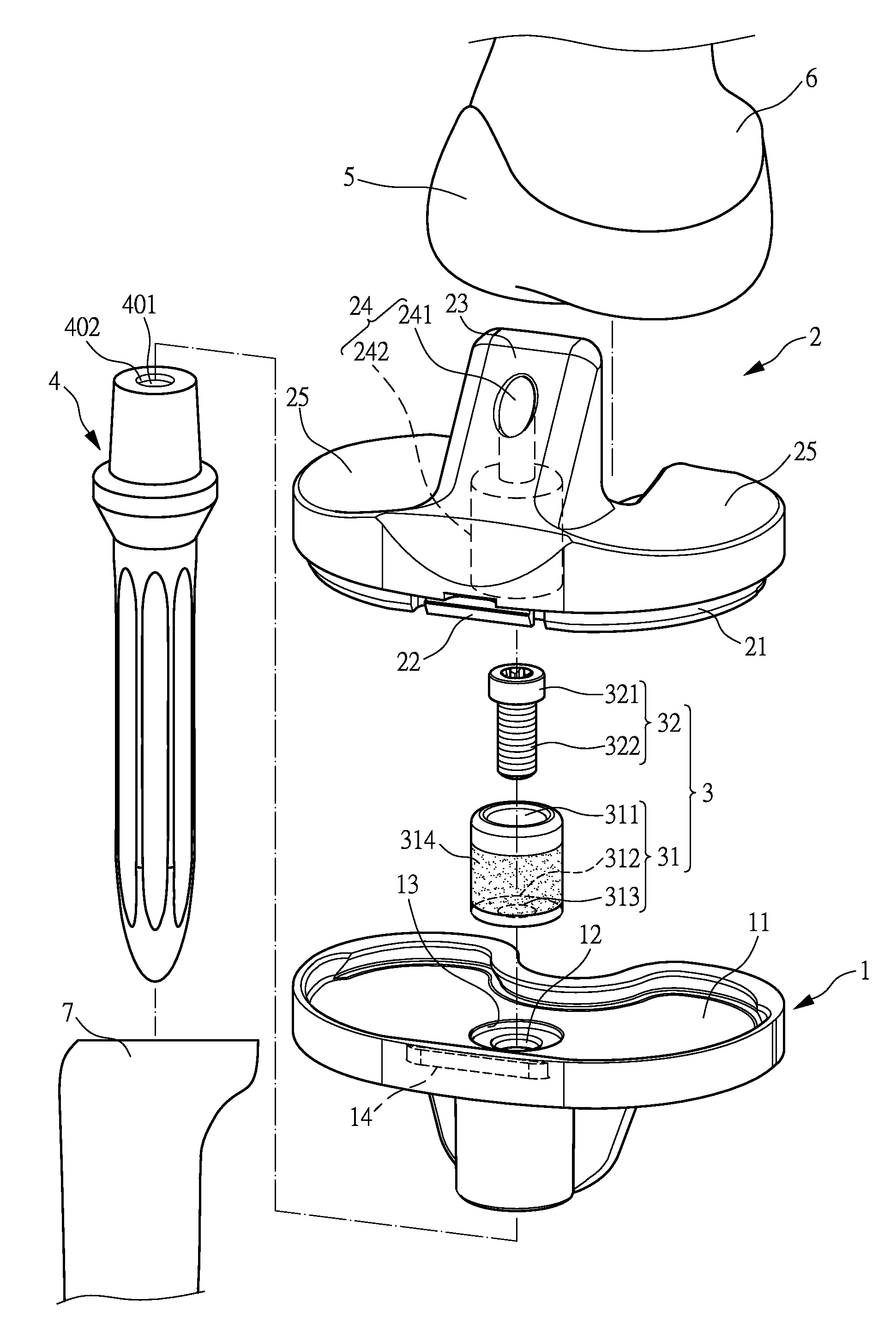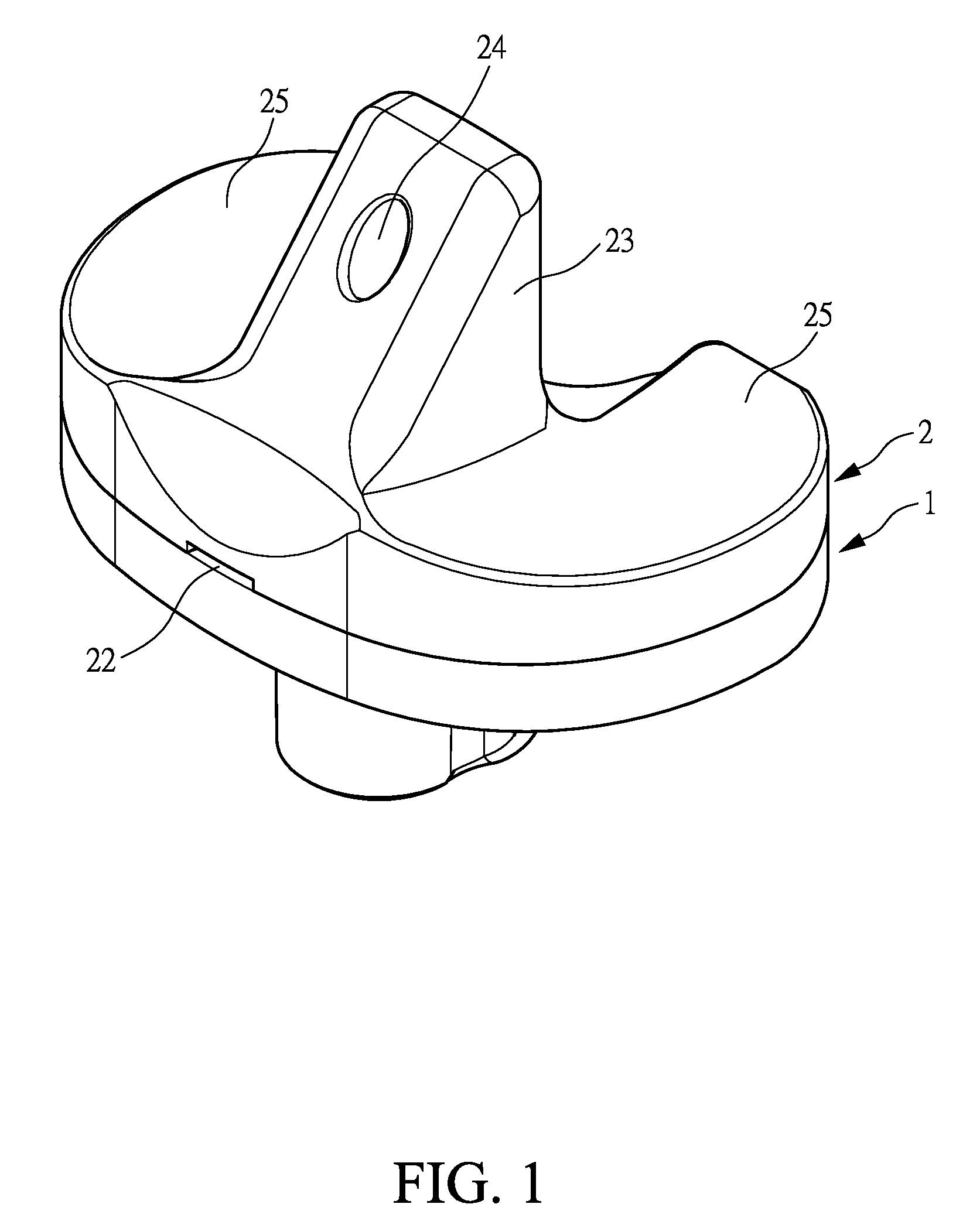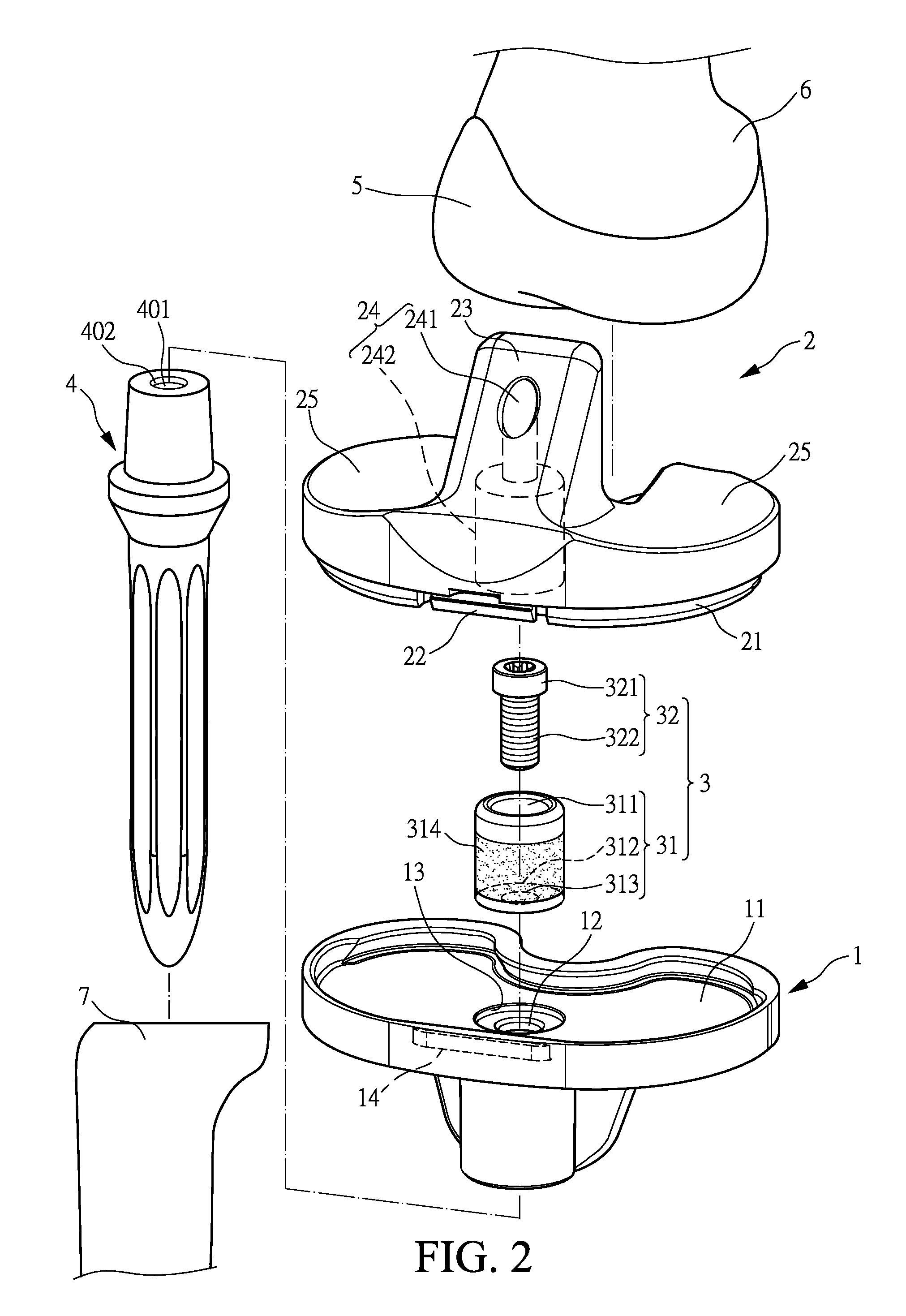Structure improvement of an orthopaedic implant of an artificial knee joint
a technology of knee joint and structure, applied in the field of structure improvement of an orthopaedic implant of a knee joint, can solve the problems of pain or inability to provide proper moving functions, dislocation between, and easy fracture, and achieve the effects of preventing deformation, stabilizing coupling, and enhancing practicability and inventiveness
- Summary
- Abstract
- Description
- Claims
- Application Information
AI Technical Summary
Benefits of technology
Problems solved by technology
Method used
Image
Examples
Embodiment Construction
[0019]With reference to the drawings and in particular to FIGS. 1-3, which show, respectively, a perspective view, an exploded view, and a cross-sectional view of an orthopaedic implant constructed in accordance with the present invention, the orthopaedic implant of the present invention connected a femur 6 and a tibia 7, and a stem 4 was implanted into the tibia 7, wherein an end of the stem 4 formed a coupling hole 401 with inner thread 402, in which formed to allow inter-engagement between the stem 4 of the tibia 7. The orthopaedic implant of the present invention comprises a tibial baseplate 1, a tibial insert 2, and a reinforcement 3. The orthopaedic implant of the present invention comprises a tibial baseplate 1, a tibial insert 2, and a reinforcement 3.
[0020]The tibial baseplate 1 is of a modular design having various sizes and forms a recess 11. The recess 11 has a bottom that has a central portion defining a through hole 12 extending through the tibial baseplate, and an end...
PUM
 Login to View More
Login to View More Abstract
Description
Claims
Application Information
 Login to View More
Login to View More - R&D
- Intellectual Property
- Life Sciences
- Materials
- Tech Scout
- Unparalleled Data Quality
- Higher Quality Content
- 60% Fewer Hallucinations
Browse by: Latest US Patents, China's latest patents, Technical Efficacy Thesaurus, Application Domain, Technology Topic, Popular Technical Reports.
© 2025 PatSnap. All rights reserved.Legal|Privacy policy|Modern Slavery Act Transparency Statement|Sitemap|About US| Contact US: help@patsnap.com



